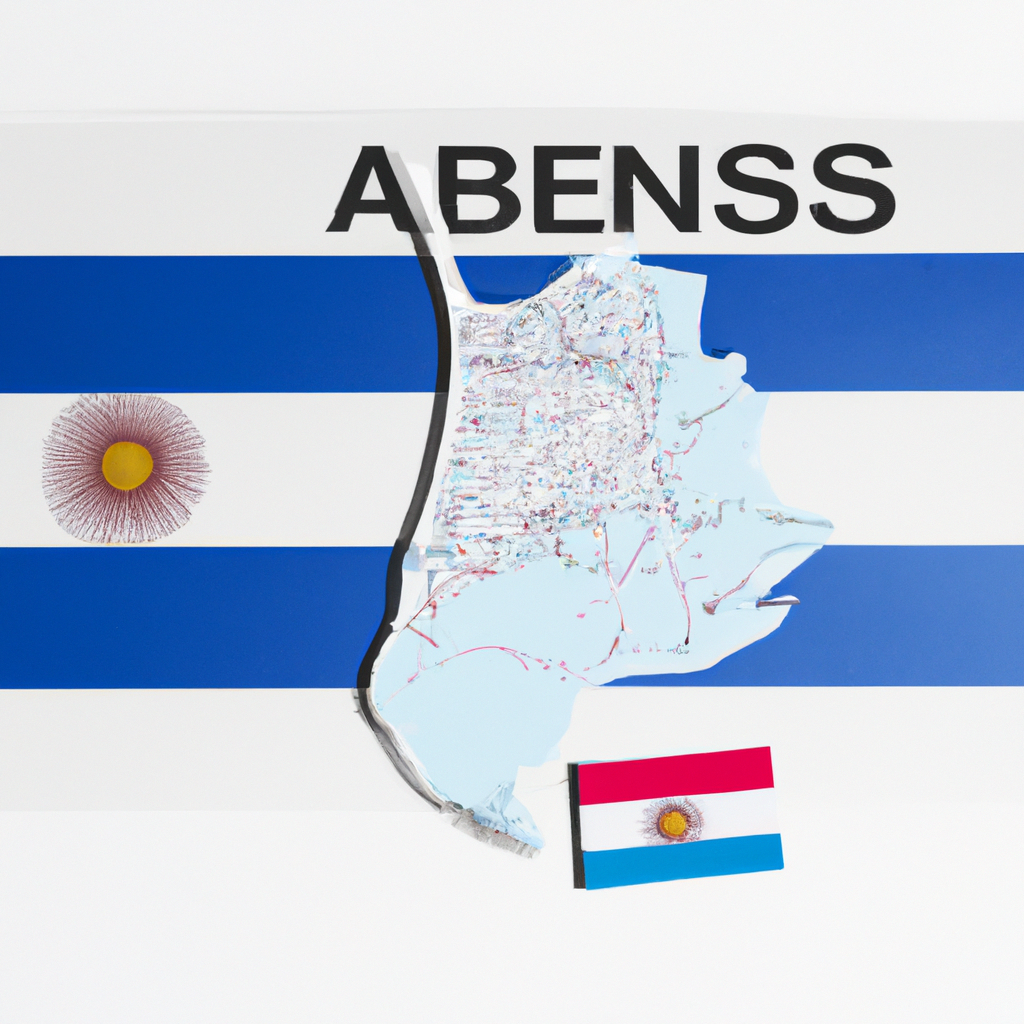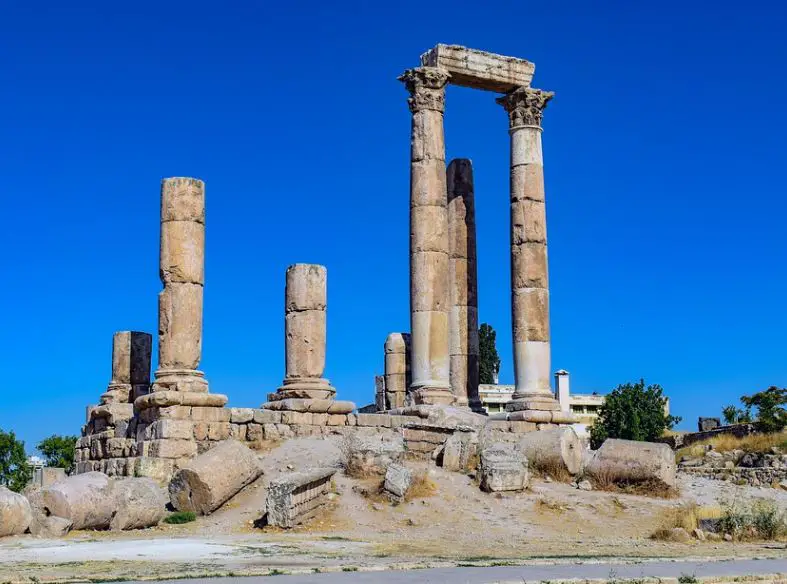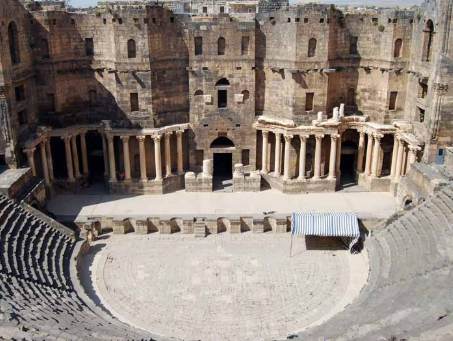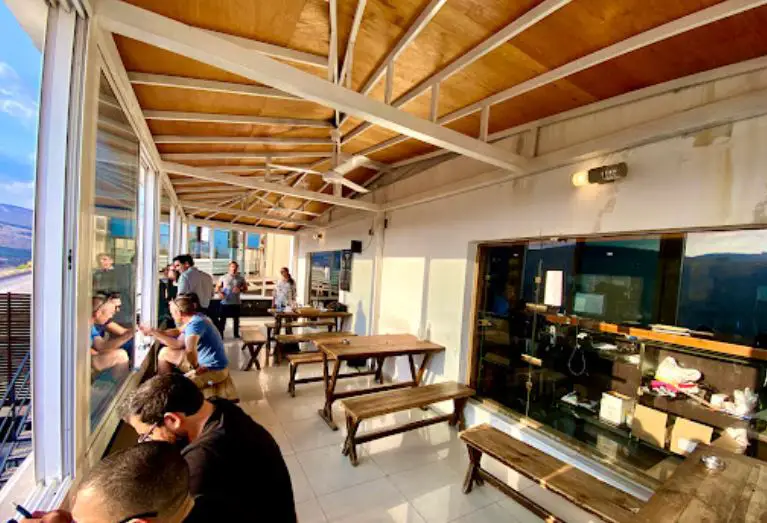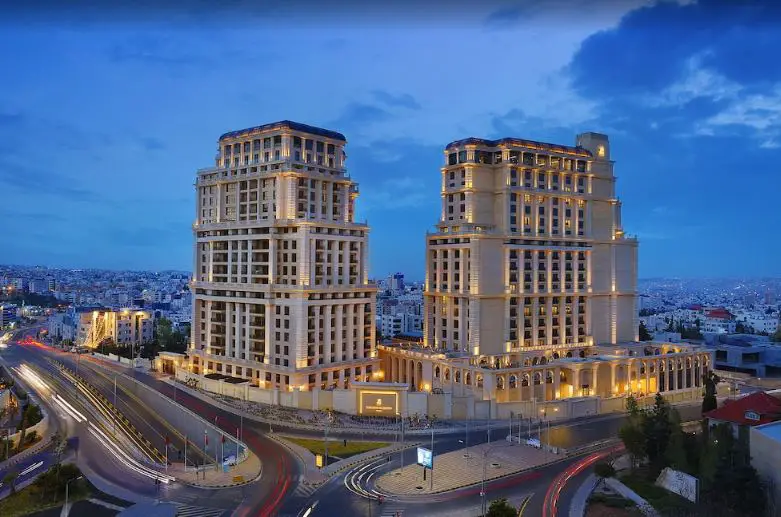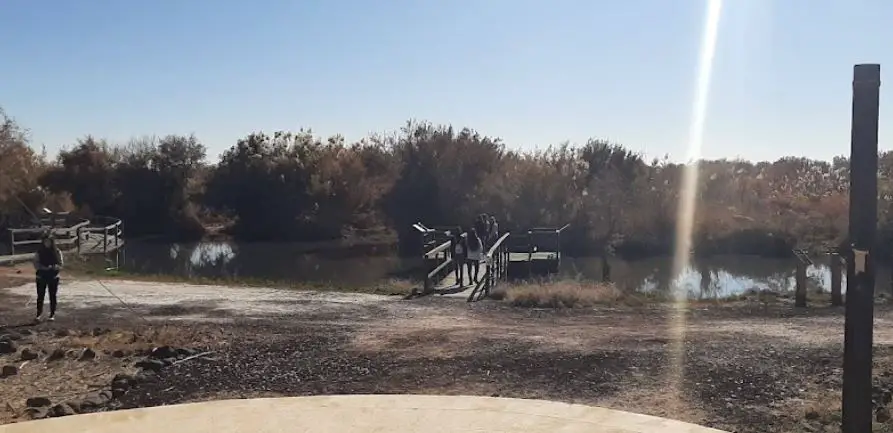Petra, Jordan: Interesting Facts,History, Things to do,Why to Visit
Post ByAdequate Travel
Petra, Jordan, is an ancient city famous for its carved-stone buildings and breathtaking beauty. With a rich history, stunning monuments, and plenty of things to do, Petra is a must-visit destination for any traveler. From stunning hikes to a wealth of archaeological sites and monuments, Petra offers an adventure like no other. From the Al Khazneh Treasury Treasury to the Monastery, Petra's rock-cut structures are some of the most iconic sights in the world. Its unique atmosphere and remarkable history make it one of Jordan's essential attractions. With its well-preserved ruins, fascinating history, diverse activities, and stunning landscapes, Petra is a must-see destination for all travelers.
Jordan is a country located in the Middle East, bordered by Iraq, Saudi Arabia, Syria, Israel, and the West Bank. It is known for its historic sites, including the ancient city of Petra, which is a UNESCO World Heritage Site. The capital and largest city of Jordan is Amman. The country has a population of around 10 million people, with Arabic as the official language. Jordan is a constitutional monarchy, with King Abdullah II serving as the current monarch. The economy is diverse, with industries such as tourism, information technology, and pharmaceuticals playing a significant role. Jordan also faces challenges, including water scarcity, economic inequality, and hosting a large number of refugees, particularly from Syria and Iraq.Explore the popular places in jordan, and immerse yourself in its vibrant culture.
Interesting facts
Fact 1: Historical Importance
Jordan is a country with a rich history, known for its archaeological sites and ancient civilizations. The city of Petra, a UNESCO World Heritage Site, is one of the most iconic tourist destinations in Jordan. It is famous for its stunning rock-cut architecture, including the Treasury and Monastery. Another significant historical site is the Roman city of Jerash, showcasing well-preserved ruins dating back to the Roman Empire.
Fact 2: Diverse Landscapes
Jordan is home to diverse landscapes, offering stunning natural beauty to visitors. One of the most famous natural wonders is the Dead Sea, which is the lowest point on Earth. Its high salt concentration allows individuals to effortlessly float on the water's surface. Furthermore, Jordan has the breathtaking Wadi Rum desert, known for its unique red sand dunes and rock formations, which has served as a backdrop for several famous films, including Lawrence of Arabia and The Martian.
Fact 3: Cultural Heritage
Jordan has a rich cultural heritage and is known for its warm hospitality. The local population is known as Jordanians, and the majority follow Islam as their religion. The country celebrates numerous cultural festivals and events, showcasing traditional music, dance, and cuisine. One significant cultural event is the Jerash Festival, where performers from around the world gather to showcase their talents.
Fact 4: Natural Wonders
In addition to its diverse landscapes, Jordan is home to remarkable natural wonders. The Dana Biosphere Reserve is a vast nature reserve encompassing diverse ecosystems, including mountains, canyons, and desert landscapes. It is an ideal place for hiking and wildlife enthusiasts. The Red Sea coastal area of Aqaba is another natural gem, offering incredible snorkeling and diving opportunities with its colorful coral reefs.
Fact 5: Modern Cities
Jordan is not only known for its historical sites and natural landscapes but also for its modern cities. The capital city, Amman, blends ancient and modern elements, offering a vibrant atmosphere, modern infrastructure, and diverse culinary experiences. Other notable cities include Aqaba and Petra, which have grown into popular tourist destinations, offering comfortable accommodations and a range of amenities.
From museums to parks,jordan tourist attractions offer something for everyone, making it a versatile destination for all type of tourists.Early Civilization in Jordan
Jordan has a long and rich history, with evidence of human habitation in the region dating back to the Paleolithic era. Numerous ancient civilizations have left their mark on Jordan, including the Ammonites, Edomites, Nabateans, Romans, and Byzantines. These civilizations have shaped the country's cultural heritage and left behind remarkable archaeological sites.The Nabateans and Petra
One of the most famous and stunning historical sites in Jordan is the ancient city of Petra, built by the Nabateans around the 6th century BCE. Located within a narrow canyon, Petra features remarkable rock-cut architecture, including the iconic Treasury building. This UNESCO World Heritage Site is a testament to the impressive engineering skills and prosperity of the Nabatean civilization.The Greco-Roman Period
During the Hellenistic period, Jordan came under the influence of the Greek Seleucids and later the Roman Empire. The ancient city of Jerash, also known as Gerasa, flourished during this time, showcasing impressive Greco-Roman architecture and ruins. The well-preserved ruins of Jerash provide a glimpse into the urban life of the period and are a major tourist attraction in Jordan.Islamic Rule and Crusader Period
In the 7th century CE, the Islamic Rashidun Caliphate conquered Jordan and introduced Islam to the region. Jordan then became part of various Islamic dynasties, including the Umayyads, Abbasids, and Ayyubids. During the Crusades, Jordan witnessed conflicts between Muslim rulers and European armies, with several castles and fortresses being built for defensive purposes. A notable example is the Crusader castle of Karak, which played a significant role during the Crusader period.Modern History
In the 20th century, Jordan underwent significant political changes. It was part of the Ottoman Empire until the end of World War I when it came under British control as the Emirate of Transjordan. In 1946, Transjordan gained independence and later became the Hashemite Kingdom of Jordan. The country has experienced political stability under the leadership of King Hussein and his successors, including the current ruler, King Abdullah II.Examples of historical sites in Jordan:- The ancient city of Petra with its iconic Treasury building.- The ruins of Jerash, showcasing Greco-Roman architecture.- The Crusader castle of Karak, known for its defensive significance.- Amman Citadel, an ancient hilltop fortress.- Umm Qais, an ancient Roman Decapolis city.- Madaba, renowned for its Byzantine and Umayyad mosaics.- The Desert Castles, a collection of Umayyad palaces and fortresses.- Ajloun Castle, a 12th-century Muslim fortress.- The Dead Sea Scrolls, discovered in the caves near the Dead Sea.- The Baptism Site, believed to be the location where John the Baptist baptized Jesus.Exploring the rich heritage of historical sites in jordan is a journey through time and culture.Famous Things of Jordan
1. Petra: Known as the Lost City, Petra is an ancient archaeological site in southern Jordan. It is famous for its magnificent rock-cut architecture and stunning natural landscape. The highlight of Petra is the Al-Khazneh, also known as The Treasury, which is a massive temple-like structure carved into the rock face. Other notable attractions include the Monastery and the Roman Theater.2. Dead Sea: Located at the lowest point on Earth, the Dead Sea is a saltwater lake bordered by Jordan to the east and Israel to the west. It is famous for its high salt concentration, allowing swimmers to easily float on its surface. The Dead Sea is also known for its mineral-rich black mud, which is believed to have therapeutic properties.3. Wadi Rum: Wadi Rum is a desert valley famous for its unique red sand dunes, towering cliffs, and stunning rock formations. It has gained popularity in recent years after being featured in several films, including "Lawrence of Arabia" and "The Martian." Visitors can explore the area through various activities, such as jeep tours, camel rides, and camping under the starry night sky.4. Jerash: Located in northern Jordan, Jerash is an ancient Roman city that dates back to the 1st century AD. It is one of the best-preserved Roman cities in the world and offers a fascinating glimpse into the past. Visitors can explore well-preserved ruins, including the Oval Plaza, the Temple of Artemis, and the ancient Roman theater.5. Ajloun Castle: Ajloun Castle is a medieval fortress built during the 12th century by the Ayyubid dynasty. It is strategically located on a hilltop, offering panoramic views of the surrounding countryside. The castle served as a defense stronghold against Crusader attacks and offers visitors a chance to explore its maze-like passageways, towers, and battlements.6. The Jordan River: The Jordan River holds great religious significance as it is believed to be the place where Jesus was baptized by John the Baptist. Pilgrims from around the world visit the riverbank to participate in baptism rituals and seek spiritual enlightenment. The site also offers recreational activities, including kayaking and swimming.7. Amman Citadel: Located in the capital city of Amman, the Amman Citadel is an ancient hilltop archaeological site that showcases artifacts from various periods of Jordanian history. It houses significant structures, such as the Temple of Hercules, the Umayyad Palace, and the Roman Theater. The panoramic view of Amman from the citadel is also mesmerizing.Examples:
- Example 1: Petra is a must-visit attraction in Jordan due to its impressive rock architecture and the iconic Treasury.- Example 2: Tourists flock to the Dead Sea to experience the unique sensation of floating effortlessly on its salty waters.
- Example 3: Wadi Rum's red sand dunes and surreal landscapes have made it a popular filming location for movies.
- Example 4: Jerash offers visitors the opportunity to explore Roman ruins and gain insights into ancient history.
- Example 5: Ajloun Castle provides a glimpse into medieval times with its well-preserved architecture and stunning views.
- Example 6: The Jordan River is a site of immense religious significance, attracting pilgrims seeking baptism rituals.
- Example 7: The Amman Citadel offers a glimpse into Jordan's history and provides breathtaking views of the capital city.
Discover some unique facts about jordan that will leave you amaze and intrigue.
Culture of Jordan:
1. Arab Hospitality:
Hospitality is an essential part of Jordanian culture, with locals known for their warm and welcoming nature. Guests are treated with great respect and generosity, often being offered tea or coffee upon arrival. This tradition of hospitality can be observed in the local markets or even in private homes.2. Traditional Dress:
The traditional clothing in Jordan reflects the country's Bedouin heritage and Islamic influences. Men often wear a long robe called a "dishdasha" or "thobe," while women dress in a long, loose-fitting garment known as an "abaya" along with a headscarf.3. Cuisine:
Jordanian cuisine is diverse and offers a blend of Mediterranean and Middle Eastern flavors. Traditional dishes include Mansaf (a lamb dish served with rice and yogurt sauce), Falafel, Hummus, and Maqluba (a layered dish of rice, meat, and vegetables). The food is often accompanied by fragrant spices and Jordanian bread, called "Shrak" or "Markook."4. Language:
The official language of Jordan is Arabic, and the Jordanian dialect has its own unique characteristics. English is widely spoken, especially in urban areas and tourist destinations.5. Islamic Influence:
Islam heavily influences Jordanian culture, and its principles are observed in various aspects of daily life. Mosques, such as the grand Al-Husseini Mosque in Amman, play a central role as places of worship and community gatherings.6. Arts and Crafts:
Jordan has a rich artistic heritage, with traditional crafts such as pottery, weaving, and mosaics being prominent. Jordanian artisans are known for their intricate designs and attention to detail, seen in the beautiful handwoven rugs and ornate mosaics found in historical sites.Cuisine of Jordan
The cuisine of Jordan is a reflection of the country's rich history and diverse culture. It is a blend of Middle Eastern, Mediterranean, and Levantine culinary traditions, resulting in a unique and flavorful cuisine. The Jordanian cuisine is known for its bold and aromatic flavors, generous use of spices, and fresh ingredients.
Traditional Dishes
1. Mansaf: Considered the national dish of Jordan, mansaf is a traditional dish made with lamb cooked in a jameed (dried yogurt) sauce and served with rice and pine nuts. It is often served on special occasions and represents Jordanian hospitality.
3. Musakhan: This traditional Palestinian dish is also popular in Jordan. It consists of roasted chicken seasoned with sumac, onions, and toasted almonds, served on a bed of taboon bread. Musakhan showcases the flavors of the region and is often enjoyed during gatherings and celebrations.
4. Maqluba: Meaning "upside down" in Arabic, maqluba is a flavorful one-pot dish made with layers of rice, meat (usually chicken or lamb), and vegetables such as eggplant, cauliflower, and carrots. Once cooked, the dish is inverted onto a serving tray, hence the name.
5. Jordanian Mezze: Mezze refers to a variety of small dishes served as appetizers or part of a meal. In Jordan, mezze often includes dishes such as hummus, tabbouleh, baba ganoush (roasted eggplant dip), stuffed grape leaves, and mutabbal (grilled eggplant dip).
Influences and Ingredients
Jordanian cuisine has been influenced by various cultures and civilizations throughout history, including the Arab, Ottoman, and Bedouin traditions. The use of spices such as cumin, cardamom, cinnamon, and sumac is prominent in Jordanian dishes, adding depth of flavor and aroma. Olive oil, yogurt, garlic, and fresh herbs like mint and parsley are commonly used ingredients that contribute to the distinct taste of Jordanian cuisine.
Modern Innovations
While traditional dishes still hold a special place in Jordanian cuisine, modern innovations and international influences have also made their mark. Chefs in Jordan are experimenting with fusion cuisine, incorporating elements from Western and Asian culinary traditions. This has led to the emergence of contemporary Jordanian dishes that offer a unique twist on traditional recipes.
Examples of Modern Jordanian Dishes
1. Jordanian Sushi: A fusion of Japanese sushi and Jordanian flavors, this dish replaces raw fish with other ingredients such as falafel, pickled vegetables, and hummus, rolled in rice and seaweed.
3. Arabic Pasta: This dish takes inspiration from Italian pasta dishes but incorporates Middle Eastern flavors. It often includes ingredients such as lamb or chicken, tomatoes, garlic, and spices, served with a creamy tahini or yogurt-based sauce.
4. Jordanian Burgers: These burgers feature traditional Jordanian flavors by using locally sourced ingredients and spices like za'atar or sumac. They are often accompanied by a variety of toppings and sauces, such as labneh or tahini dressing.
5. Fusion Desserts: Chefs in Jordan are also experimenting with dessert creations, combining traditional Middle Eastern sweets with Western pastries and flavors. For example, baklava cheesecake or kunafa-stuffed croissants.Discover unique facts about jordan, a destination filled with rich history and natural beauty.
Heading: Cultural and Historical Sites
1. Explore the ancient city of Petra: Known as the "Rose City," Petra is an archaeological treasure and a UNESCO World Heritage Site. Marvel at the stunning rock-cut architecture, including the iconic Treasury and the Monastery. Don't miss the opportunity to hike up to the High Place of Sacrifice for panoramic views.
2. Visit the Roman ruins of Jerash: Jerash showcases the well-preserved remnants of a Roman provincial city. You can stroll through the colonnaded streets, visit the Roman theaters, and admire the Temple of Artemis.
3. Discover the Ajloun Castle: Situated on a hilltop, Ajloun Castle offers panoramic views of the surrounding countryside. This 12th-century fortress built by Saladin served as a strategic defense point against the Crusaders.
Heading: Natural Wonders and Outdoor Activities
1. Take a dip in the Dead Sea: Float effortlessly in the hypersaline waters of the Dead Sea, which is the lowest point on Earth. The mineral-rich mud found here is also believed to have therapeutic properties.
2. Trek through the Dana Biosphere Reserve: Embark on a multi-day hike in the Dana Biosphere Reserve, a stunning nature reserve. The reserve offers breathtaking landscapes, diverse flora and fauna, and opportunities to spot rare wildlife such as the Nubian ibex and Syrian wolf.
3. Explore the Wadi Rum Desert: Immerse yourself in the beauty of the red desert landscape of Wadi Rum. You can go on a jeep safari, hike through canyons, ride a camel, or even experience a hot air balloon ride for a unique perspective.
Heading: Culinary Experiences
1. Indulge in traditional Jordanian cuisine: Sample delicious dishes like Mansaf (lamb cooked in fermented yogurt sauce), Falafel, and Mezze (a variety of small plates including hummus, tabbouleh, and baba ganoush).
2. Sip on Arabic coffee and tea: Jordanians are known for their warm hospitality and love for traditional coffee and tea. Enjoy a cup of Arabic coffee served with cardamom, or try mint tea, a refreshing and aromatic beverage.
3. Visit local markets and food stalls: Wander through the local markets, such as Amman's Rainbow Street or the bustling Souk Jara in downtown Amman. Taste street food like shawarma, freshly squeezed juices, and sweets like knafeh or baklava.
When planning your trip to jordan, be sure to include the best things to do in jordan, which encompass a wide range of cultural experiences.Climate of Jordan
The climate of Jordan is classified as Mediterranean, with hot, dry summers and cool, wet winters. However, due to its unique geographic features, the climate can vary across different regions of the country.
1. Summers:
In most parts of Jordan, summers are hot and dry, with temperatures frequently exceeding 40 degrees Celsius (104 degrees Fahrenheit). The air is usually dry, and rainfall is scarce during this time of the year. For example, in Amman, the capital city of Jordan, average maximum temperatures in July can reach around 33 degrees Celsius (91 degrees Fahrenheit).
2. Winters:
Winters in Jordan are relatively cool and wet, especially in the western parts of the country. Rainfall occurs from November to April, with December and January being the wettest months. In these months, temperatures can drop to around 5 degrees Celsius (41 degrees Fahrenheit) in Amman. In some mountainous areas, such as Petra and Ajloun, snowfall is not uncommon during winter.
3. Dead Sea Region:
The Dead Sea region experiences a unique climate. It is characterized by extremely hot summers and mild winters. During the summer months, temperatures often exceed 40 degrees Celsius (104 degrees Fahrenheit). The proximity to the Dead Sea also affects the climate, as the evaporating water from the sea creates a humid environment in this region.
4. Desert Areas:
Jordan has desert areas, such as Wadi Rum and the eastern desert. These regions have an arid desert climate, with very hot summers and cold winters. Daytime temperatures in summer can exceed 45 degrees Celsius (113 degrees Fahrenheit), while winter nights can be freezing, with temperatures dropping below zero.
5. Red Sea Coast:
The Red Sea coast enjoys a milder climate compared to the inland areas. Summers are hot, but the proximity to the sea brings about slightly cooler temperatures compared to the rest of the country. Winters are mild, with temperatures rarely dropping below 15 degrees Celsius (59 degrees Fahrenheit).
In conclusion, Jordan experiences a Mediterranean climate with hot, dry summers and cool, wet winters. However, the climate can vary across different regions, such as the desert areas, Dead Sea region, and the Red Sea coast. It is important to take these regional climate differences into account when planning a visit to Jordan.
Explore the popular places in jordan, and immerse yourself in its vibrant culture.Popular Activities in Jordan
1. Visiting Petra: One of the most popular activities in Jordan is visiting the ancient city of Petra. This UNESCO World Heritage site is known for its magnificent rock-cut architecture and fascinating history. The iconic Treasury building, carved into a towering sandstone cliff, is a must-see attraction in Petra.
2. Exploring Wadi Rum: Wadi Rum is a desert valley known for its breathtaking landscapes and unique red sand dunes. Visitors can go on jeep or camel safaris to explore the vast desert, visit ancient rock art sites, and even spend a night in a traditional Bedouin camp under the starry sky.
3. Floating in the Dead Sea: One of the most incredible experiences in Jordan is floating in the Dead Sea, the lowest point on Earth. The high salt content of the sea makes it impossible for anyone to sink, allowing visitors to effortlessly float on its surface and enjoy the therapeutic benefits of its mineral-rich mud.
4. Diving in the Red Sea: Jordan offers excellent diving opportunities in the Red Sea. Aqaba, a coastal city, is a popular diving destination with numerous dive sites teeming with colorful corals, vibrant marine life, and even shipwrecks to explore.
5. Discovering Jerash: Jerash is a well-preserved Roman city located in northern Jordan. Its ancient ruins, including impressive theaters, temples, and arches, provide visitors with a glimpse into the region's rich history. A visit to Jerash is like stepping back in time to the days of the Roman Empire.
6. Hiking in Dana Biosphere Reserve: Nature enthusiasts will enjoy hiking in the Dana Biosphere Reserve, one of Jordan's most diverse natural reserves. The reserve offers various hiking trails that lead through stunning canyons, spectacular cliffs, and picturesque villages, providing an opportunity to witness the country's diverse flora and fauna.
7. Exploring Amman: The capital city of Jordan, Amman, is a vibrant and bustling metropolis that offers a mix of modernity and history. Visitors can explore the ancient Citadel, visit the Roman Theater, browse the markets of downtown Amman, and indulge in delicious Jordanian cuisine at local restaurants.
8. Visiting the Desert Castles: Jordan is home to several desert castles spread across the eastern desert. These ancient fortresses and palaces showcase the country's rich history and architectural splendor. Qasr Amra, Qasr Al-Kharrana, and Qasr Al-Azraq are among the most well-known desert castles.
9. Going on a culinary tour: Jordanian cuisine is a true delight for food lovers. Exploring the local markets, trying traditional dishes like Mansaf (a lamb dish), falafel, and hummus, and enjoying a cup of mint tea in a traditional coffee shop are some of the culinary experiences to enjoy in Jordan.
10. Trekking in the Jordanian Highlands: The Jordanian Highlands offer stunning landscapes and challenging trekking routes for adventure enthusiasts. Wadi Mujib and the Dana to Petra trek are popular options for those seeking thrilling hiking experiences.
Plan your trip with a list of the best things to do in jordan, catering to all interests.Night Life in Jordan
Jordan may not be known for its vibrant and bustling nightlife scene like some other countries, but it still offers a variety of options for those looking for entertainment after dark. The nightlife in Jordan primarily revolves around the capital city of Amman, where you can find a range of bars, clubs, and restaurants catering to different tastes and preferences. Below are some key aspects of the night life in Jordan:
1. Amman's Bar Scene
Amman is home to numerous bars offering a relaxed and cozy atmosphere for locals and tourists alike. Popular spots include Maestro, a rooftop bar with stunning views of the city, which specializes in creative cocktails. The Dubliners is a traditional Irish pub where you can enjoy live music and pub grub. Trader Vic's, located in the luxurious InterContinental Hotel, is a famous Polynesian-themed bar serving exotic drinks in a tropical setting.
2. Clubs and Lounges
For those who enjoy dancing and live music, Amman has a few clubs and lounges to offer. Cube Lounge is a popular choice, hosting local and international DJs with a variety of music genres. CLSTR is a trendy rooftop bar and nightclub, known for its stylish decor and electronic music events. The Keyhole Lounge is a unique venue in Amman, featuring live jazz performances, stand-up comedy, and open mic nights.
3. Traditional Music and Entertainment
Jordan also offers opportunities to experience traditional music and entertainment through cultural performances. For example, Kan Zamaan is a traditional Jordanian restaurant that provides live music shows featuring local musicians playing traditional Arabic instruments. You can also visit the Roman Theatre in Amman, which occasionally hosts concerts and cultural events.
4. Shisha Culture
Shisha, or hookah, is a popular aspect of Jordanian nightlife. Many lounges and cafes offer a cozy and laid-back atmosphere for people to enjoy flavored tobacco, chat with friends, and have a relaxing evening. Al-Pasha Turkish Bath & Shisha Lounge is one such place in Amman, combining traditional Turkish bath experiences with shisha enjoyment.
5. Safe and Welcoming Environment
Jordan is known for its safety and hospitality, making it a pleasant destination for evening activities. Visitors can feel comfortable exploring the night markets, known as souks, in cities like Amman and Petra, where vendors sell various traditional goods, handicrafts, and street food.
In conclusion, while Jordan might not be renowned for its wild and energetic nightlife, there are still plenty of options for an enjoyable evening out. Whether you prefer a lively bar, a bustling nightclub, traditional music, or simply relaxing with shisha, Jordan offers diverse experiences in a safe and welcoming environment.Discover the untold stories behind jordan unique facts, and historical treasures.Reasons to Visit Jordan
1. Rich Historical Sites: Jordan is home to numerous historical and archaeological wonders. The city of Petra, a UNESCO World Heritage Site, is a prime example. This ancient city is carved into vibrant red rocks and is known for its treasury, temples, and tombs. Another significant site is the Roman city of Jerash, which offers well-preserved ruins, theaters, and a hippodrome.2. Stunning Natural Landscapes: Jordan possesses diverse natural landscapes, ranging from the red desert of Wadi Rum to the salty waters of the Dead Sea. Wadi Rum is often referred to as the "Valley of the Moon" and offers breathtaking desert scenery with towering sandstone cliffs, natural arches, and sand dunes. The Dead Sea, on the other hand, is the lowest point on Earth and boasts unique buoyancy due to its high salt content.3. Warm Hospitality: Jordanians are known for their friendliness and warm hospitality towards visitors. Locals often go out of their way to make tourists feel welcome and ensure a pleasant stay. This welcoming nature and genuine kindness create a memorable experience and make visitors feel at home in Jordan.4. Adventure Opportunities: Jordan offers a plethora of adventure activities for thrill-seekers. Travelers can embark on hiking and trekking expeditions in the beautiful landscapes of Dana Biosphere Reserve or explore the canyons and waterfalls of Wadi Mujib. The Red Sea coastal city of Aqaba provides excellent opportunities for snorkeling, scuba diving, and other water sports.5. Delicious Cuisine: Jordanian cuisine is a delightful fusion of Middle Eastern flavors and influences from neighboring countries. Jordanian dishes like mansaf (a traditional Bedouin dish), falafel, and mezze (a selection of appetizers) are a gastronomic treat. Exploring the local street food scene and indulging in traditional Jordanian meals is a must for food enthusiasts.Overall, Jordan offers a captivating mix of history, nature, adventure, hospitality, and cuisine. Whether it's exploring ancient ruins, immersing oneself in splendid landscapes, enjoying the generosity of the locals, seeking adrenaline-pumping activities, or indulging in flavorful dishes, Jordan has something to offer for every traveler.Whether you're a history buff or an adventure seeker, jordan has an attraction for you. So, don't miss the chance to visit popular places in jordanNumber of days required to visit Jordan
Jordan is a country rich in history, culture, and natural beauty. The number of days required to visit Jordan depends on various factors such as the places you want to visit, your travel preferences, and the time you have available.
Factors to consider when determining the number of days:
Sights to see: Jordan offers a wide range of attractions including ancient ruins, historical sites, natural wonders, and vibrant cities. Some of the must-visit places are Petra, Wadi Rum, Jerash, Dead Sea, Amman, and Aqaba. The more places you want to explore, the more days you will need.
Level of exploration: The time needed to thoroughly explore each attraction varies. For example, Petra, an ancient city carved into the mountains, can easily occupy at least two full days to explore its extensive area and hidden treasures. On the other hand, a visit to the Dead Sea for a quick dip may only require a few hours.
Travel pace: Some travelers prefer a relaxed itinerary with ample time to soak up the atmosphere and immerse themselves in the local culture. Others may have a more packed schedule, wanting to see as much as possible in a limited time. Your preferred travel pace will determine the number of days you need in Jordan.
Example itineraries:
Based on the factors mentioned above, here are a few example itineraries:
7-Day Itinerary:
Day 1: Arrival in Amman, exploring the city and its historical sites.
Day 2-3: Visit Petra and spend a full day exploring the ancient city.
Day 4: Excursion to Wadi Rum for a desert experience.
Day 5: Explore Jerash, known for its well-preserved Roman ruins.
Day 6: Relax by the Dead Sea, trying the famous floating experience and enjoying the mud spa.
Day 7: Departure from Amman.
10-Day Itinerary:
Day 1-2: Arrival in Amman, exploring the city and its historical sites.
Day 3-5: Visit Petra, spending two full days exploring the vast archaeological site.
Day 6: Excursion to Wadi Rum for a desert experience.
Day 7-8: Explore Jerash and other historical sites in Northern Jordan.
Day 9-10: Relax by the Dead Sea and visit Aqaba for snorkeling or diving.
Day 11: Departure from Amman.
Conclusion:
The number of days required to visit Jordan varies based on personal preferences and the places you want to explore. It is recommended to spend at least 7 days to cover the major attractions. However, if you have more time, a 10-day itinerary allows for a deeper exploration and a more relaxed pace. It is advisable to plan your itinerary in advance and consider the factors mentioned above to make the most out of your visit to Jordan.
Discover the untold stories behind jordan unique facts, and historical treasures.Significance of Jordan
Jordan, officially known as the Hashemite Kingdom of Jordan, holds significant importance in various aspects, including historical, cultural, political, and geographical reasons. Let's delve into each of these areas:
Historical Significance
1. Ancient Civilizations: Jordan is home to several historically significant civilizations, such as the Nabateans, Romans, and Byzantines. The ancient city of Petra, a UNESCO World Heritage Site, showcases the architectural brilliance of these civilizations.
2. Biblical References: Numerous biblical events are connected to Jordan, such as the crossing of the River Jordan by Moses and the baptism of Jesus Christ in the Jordan River.
3. Strategic Location: Jordan's strategic location has contributed to its historical significance by offering access to major trade routes and acting as a crossroads between the Middle East and other regions.
4. Archaeological Discoveries: Several archaeological sites, including Jerash and Umm Qais, highlight Jordan's historic past and provide insights into the lives of people who lived there centuries ago.
Cultural Significance
1. Bedouin Culture: Jordan has a rich Bedouin culture, with the Bedouin people preserving their traditional lifestyle, including nomadic practices, food, music, and storytelling.
2. Arab Heritage: Jordan represents an essential part of the broader Arab cultural heritage. It has played a vital role in promoting Arab literature, arts, and music.
3. Heritage Sites: The ancient ruins and archaeological sites found in Jordan give a glimpse into the cultural and artistic achievements of past civilizations.
Political Significance
1. Stability in the Region: Jordan is known for its stability amid regional conflicts, making it a safe haven for refugees escaping ongoing conflicts in neighboring countries.
2. Regional Diplomatic Role: Jordan often plays a vital role in regional diplomacy and peace efforts, acting as a mediator between different nations and offering diplomatic support.
3. Relationships with International Powers: Jordan maintains close relationships with various international powers, contributing to its significance in regional politics and global affairs.
Geographical Significance
1. Natural Landscape: Jordan's diverse geography includes magnificent landscapes such as the Dead Sea, Wadi Rum, and the Dana Biosphere Reserve. These natural wonders attract tourists and adventure enthusiasts from around the world.
2. Water Resources: Jordan faces water scarcity issues due to its desert environment, making it highly dependent on its water resources. The management and allocation of water play a crucial role in the country's development.
3. Bordering Conflicts: Jordan shares borders with Israel, Palestine, Syria, and Iraq, making it susceptible to the consequences of ongoing conflicts in these regions.
Overall, Jordan's significance lies in its rich history, cultural heritage, political stability, and remarkable geographical features. Its contributions to history, culture, and peace-making efforts make it a remarkable and significant nation in the Middle East.From hidden gems to iconic landmarks, jordan has something for every traveler's taste.1. What is the capital city of Jordan?
The capital city of Jordan is Amman.
Examples:
- Amman is the largest and most populous city in Jordan.
- It serves as the political, cultural, and economic center of the country.
2. What language do people in Jordan speak?
The official language of Jordan is Arabic.
Examples:
- Arabic is widely spoken by the majority of the population.
- English is also commonly understood and used in tourism and business.
3. What is the currency used in Jordan?
The currency used in Jordan is the Jordanian Dinar (JOD).
Examples:
- The Jordanian Dinar is divided into 1000 fils.
- It is advisable to exchange currency at authorized exchange offices or banks.
4. What are some popular tourist attractions in Jordan?
Jordan offers several popular tourist attractions, including:
- The ancient city of Petra, known for its elaborate rock-cut architecture.
- The Dead Sea, famous for its high salt concentration and the ability to float effortlessly.
- The Wadi Rum desert, a scenic desert landscape often featured in movies.
- The historical ruins of Jerash, showcasing Roman architecture.
5. Is Jordan a safe country for tourists?
Jordan is generally considered a safe country for tourists. The government takes significant measures to ensure the safety and security of visitors.
Examples:
- The country has a well-developed security apparatus.
- Major tourist sites have enhanced security measures in place.
- However, it is always recommended to take standard precautions such as being aware of your surroundings and following local regulations.
6. What is the climate like in Jordan?
Jordan has a diverse climate, ranging from Mediterranean in the west to desert in the east.
Examples:
- In Amman and the central highlands, the climate is characterized by hot summers and cold winters.
- The Jordan Valley and the Dead Sea area experience hot and dry desert-like conditions.
- Wadi Rum and Aqaba have a desert climate, with extremely hot summers and mild winters.
7. Are there any cultural customs or etiquette to be aware of in Jordan?
Jordan has a rich cultural heritage, and it is important to respect local customs and traditions. Some key points to consider include:
- Dress modestly, especially when visiting religious sites.
- Avoid public displays of affection.
- Always accept hospitality and food offerings graciously.
8. What is the time zone of Jordan?
Jordan operates on Eastern European Time (EET), which is UTC+2. During daylight saving time, it switches to Eastern European Summer Time (EEST), UTC+3.
Examples:
- When planning travel or scheduling events, it is important to consider the time difference.
- During daylight saving time, Jordan is two hours ahead of Coordinated Universal Time (UTC+3).
9. Do I need a visa to visit Jordan?
Visa requirements for Jordan vary depending on your nationality. Many countries, including the United States and most European countries, can obtain a visa on arrival.
Examples:
- It is recommended to check the official embassy or consulate website for up-to-date information on visa requirements and procedures.
- Some nationalities may require a visa in advance, so it is advisable to plan accordingly.
10. Can I drink tap water in Jordan?
While tap water in Jordan is generally considered safe to drink, it is recommended to drink bottled water or use water purification methods for drinking and cooking.
Examples:
- Bottled water is widely available and affordable in most areas.
- Using a water filter or boiling tap water before consumption can also provide additional safety.




